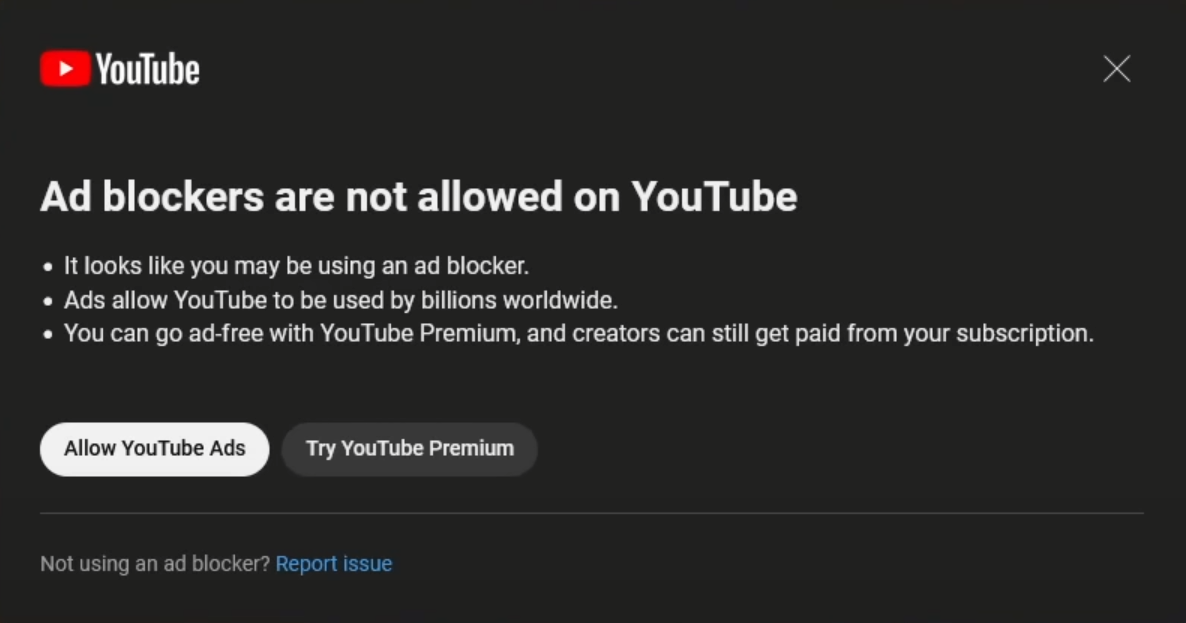
Youtube Rolls Out Anti-Adblock Features
YouTube, the renowned video-sharing platform, has taken a bold step in combatting ad blockers by implementing an experiment aimed at users with these blockers.
To sustain its free service and cater to its vast user base's needs, YouTube urges individuals to either turn off their ad blockers or consider subscribing to YouTube Premium. This paid service guarantees an ad-free experience.
This unique approach showcases YouTube's commitment to engaging users and addressing concerns about intrusive advertisements.

YouTube's Experiment With Ad Blocker Restrictions
YouTube's experiment with ad blocker restrictions aims to enforce compliance with its advertising policies. With the rise of ad blockers and the increasing frustration of users with intrusive and frequent ads, YouTube is taking steps to ensure that its platform remains profitable for content creators and accessible to users.
The experiment involves displaying a pop-up warning to users who have enabled ad blockers, informing them that they are not allowed on YouTube. The message emphasizes the importance of ads in keeping YouTube free for billions of users worldwide.
Users who receive the notification are given two options: turn off their ad blockers to allow YouTube ads or consider subscribing to YouTube Premium, which offers an ad-free experience. YouTube Premium benefits users by removing ads and ensures that content creators can still earn revenue from their videos through viewer subscriptions.
By urging viewers to try YouTube Premium or allow ads, YouTube aims to strike a balance between user experience and the financial sustainability of its platform.
It needs to be determined how many regions YouTube is conducting this experiment in and whether the company plans to completely block access to the platform for users with ad blockers. However, this move aligns with YouTube's efforts to maintain its membership growth rate, as its Music and Premium services have recently surpassed 80 million subscribers. The increasing length and frequency of ads on the platform have also led to viewer frustration, making the ad-free experience offered by YouTube Premium more appealing.
Negative Impact on YouTube's Users
Implementing anti-adblocker features on YouTube has had a detrimental effect on the user experience. These new measures, which require users to turn off their ad blockers or pay for a premium subscription, have sparked adverse reactions from the YouTube community.
One of the main concerns raised by users is the interruption of their viewing experience. The increased number and length of ads have made it difficult for users to enjoy the content they are interested in. Some users have reported enduring multiple ads before and during videos, rendering the viewing experience frustrating and impractical.
Furthermore, the inability to skip certain ads has increased users' dissatisfaction. Previously, users could skip ads after a few seconds, but this option is no longer available with the new anti-adblocker features. This has led to extended periods spent viewing advertisements, causing frustration and impatience among users.
Another issue is the impact on device performance. Ads consume additional data and resources, slowing down the loading and playback of videos. This has resulted in a laggy and unreliable streaming experience for some users, making it harder to enjoy the content they are trying to watch.
In addition to these technical issues, users are also concerned about the invasion of privacy. Some ads may collect personal data and track user behaviour, raising privacy concerns among the YouTube community.
Conclusion
In conclusion, YouTube's experiment with ad blocker restrictions is a proactive approach to encourage users to turn off their ad blockers or subscribe to YouTube Premium.
While the extent of its reach and impact on users' access to the platform remains unclear, it demonstrates YouTube's ongoing efforts to address user complaints about excessive and disruptive advertisements and boost its premium subscription base.
